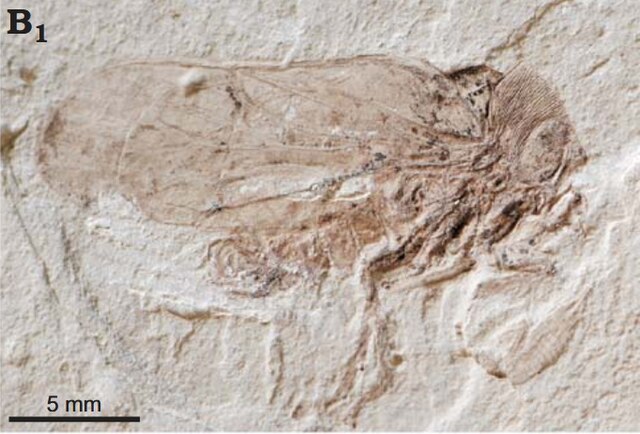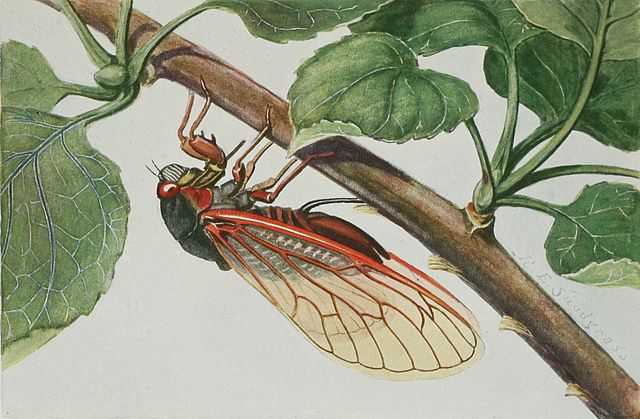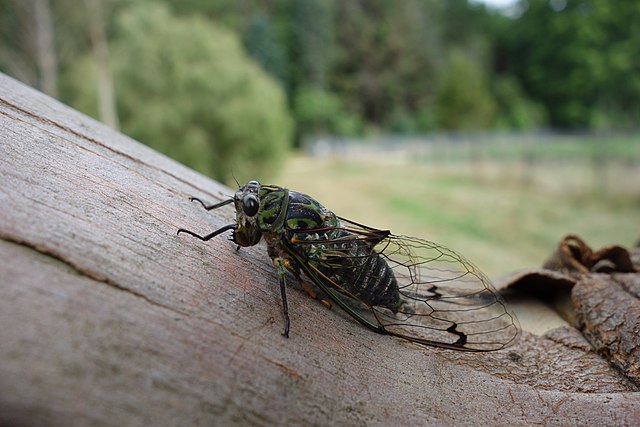The Tettigarctidae, known as the hairy cicadas, are a small relict family of primitive cicadas. Along with more than 20 extinct genera, Tettigarctidae contains a single extant genus, Tettigarcta, with two extant species, one from southern Australia and one from the island of Tasmania. Numerous fossil species have been described from the Late Triassic onwards. Tettigarcta are the closest living relatives of the true cicadas.
Tettigarctidae
Paratettigarcta zealandica, fore and hindwing
Sanmai kongi from the upper Middle–lower Upper Jurassic Daohugou beds, China
The cicadas are a superfamily, the Cicadoidea, of insects in the order Hemiptera. They are in the suborder Auchenorrhyncha, along with smaller jumping bugs such as leafhoppers and froghoppers. The superfamily is divided into two families, the Tettigarctidae, with two species in Australia, and the Cicadidae, with more than 3,000 species described from around the world; many species remain undescribed. Nearly all of cicada species are annual cicadas with the exception of the few North American periodical cicada species, genus Magicicada, which in a given region emerge en masse every 13 or 17 years.
Cicada
A 17-year cicada, Magicicada, Robert Evans Snodgrass, 1930
A chorus cicada, a species endemic to New Zealand
Mesozoic fossil fore wing of Mesogereon superbum, Australia







